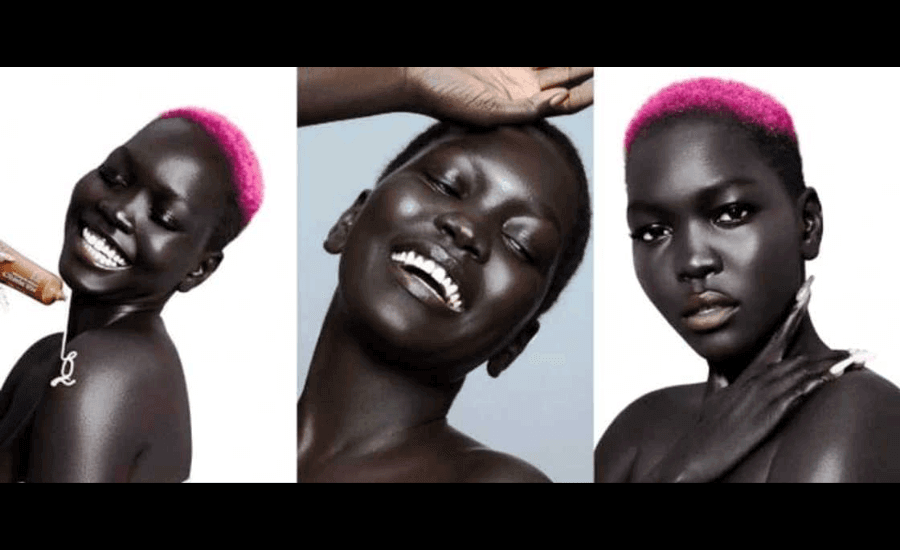The phrase “blackest person in the world” often refers to individuals with exceptionally dark skin due to high melanin content. This unique trait is shaped by genetic and environmental factors, showcasing the incredible diversity of human skin tones. Discussing such topics is essential, as it brings attention to the beauty of individuality and fosters a broader appreciation for diversity. This conversation also challenges stereotypes tied to beauty standards and promotes inclusivity in society.
Showcasing the darkest skin tones in the world is about more than just looks; it’s about honoring resiliency, individuality, and cultural legacy. It’s a chance to discuss the cultural significance of dark skin, share motivational personal stories, and delve into the science underlying pigmentation. By handling this subject with tact and respect, we can promote self-acceptance and understanding while honoring the individuality that each person contributes to the world.
Understanding Skin Tone
Skin tone is primarily determined by melanin, a pigment produced by cells called melanocytes. There are two main types of melanin: eumelanin, which results in black or brown tones, and pheomelanin, which produces yellowish hues. People with darker skin have higher eumelanin levels, offering natural protection against harmful UV rays. This pigmentation is influenced by genetics, with specific genes, like MC1R, playing a role in melanin production and distribution.
Environmental factors also impact Skin tone. Regions near the equator, where sunlight exposure is intense, have populations with higher melanin levels as an evolutionary adaptation for UV protection. Skin tone diversity reflects humanity’s ability to adapt to different environments over thousands of years. Understanding this science helps us appreciate pigmentation’s biological and functional significance while dispelling myths and biases tied to skin color.
Who is the “Blackest Person in the World”?
The term “blackest person in the world” is subjective and often influenced by media portrayal and public perception. Individuals like Nyakim Gatwech, a South Sudanese model, and Khoudia Diop, a Senegalese advocate, have gained recognition for their extraordinarily dark skin tones. These figures are celebrated for their beauty and role in promoting diversity and acceptance. Their stories highlight the importance of representation and the power of embracing one’s natural features.
Scientifically, populations in regions like East Africa, consisting of Nilotic humans, are known for having some of the darkest pores and skin tones because of their high eumelanin ranges. This trait evolved as an adaptation to severe daylight in their surroundings. While figuring out a unique “blackest character” won’t be feasible, the verbal exchange shines a light on the beauty of range and the need to challenge previous beauty requirements that regularly marginalize darker pores and skin.
The Role of Culture and Identity
Dark skin has held cultural significance throughout history. In many African societies, darker skin was an image of energy, splendor, and connection to the earth. Over time, colonial influences delivered colorism, which favored lighter skin tones and created divisions inside communities. Despite these challenges, movements celebrating darkish pores and skin, which include #MelaninMagic, have gained momentum, empowering people to include their identification with pride.
Representation in media and art has performed a vital position in changing perceptions of dark skin. Figures like Lupita Nyong’o and Alek Wek have used their structures to project stereotypes and redefine splendor requirements. Their visibility has inspired many to embrace their natural features and reject societal pressures to comply with previous beliefs. By celebrating dark pores and skin’s cultural and private significance, we can promote acceptance and foster solidarity throughout all groups.
Scientific Insights
Melanin, the pigment responsible for skin color, protects the body. Darker pores and skin, with their higher eumelanin levels, present extended resistance to UV rays, lowering the threat of sunburn and pores and skin cancers. This evolutionary benefit is most glaring in populations from solar-wealthy regions and Sub-Saharan Africa. These diversifications demonstrate the human body’s superb resilience to environmentally demanding situations.
Research into the genetics of pores and skin pigmentation is a complicated interplay of more than one gene contributing to skin tone variety. For instance, studies of the Nilotic human beings in East Africa highlight their exceptionally high eumelanin stages, which advanced to provide maximum safety in opposition to intense daylight. By understanding the technological know-how behind pigmentation, we will debunk myths, have fun with diversity, and promote an extra-inclusive appreciation of human skin.
Impact of Representation
Representation matters as it influences how individuals view themselves and others. In recent years, the media and fashion industries have made strides in showcasing darkish-skinned individuals, challenging conventional beauty requirements. Campaigns by brands like Fenty Beauty and moves including #BlackIsBeautiful have amplified voices celebrating darker skin tones, creating an extra inclusive narrative. These efforts have encouraged people worldwide to include range in all its forms.
Well-acknowledged people like Nyakim Gatwech and Alek Wek, a version from Sudan, have used their systems to inspire human beings with darker skin to be assured. Their prominence dispels myths and emphasizes the price of a strong point. Young people’s vanity and attractiveness are reinforced after they witness others who resemble them being commemorated. Being visible is one factor of representation; any other fosters respect for everybody, no matter skin tone, and alters attitudes.
Myths and Misconceptions
A not unusual fable with approximately dark skin is that it doesn’t require sun protection. While melanin does offer some herbal UV resistance, individuals with darker pores and skin can nevertheless revel in sunburn and skin damage. Sunscreen is critical for all pores and skin tones to preserve wholesome skin. Another misconception is that darker skin tones are much less suited, a stereotype rooted in colonial-generation biases that also affect societal perceptions these days. Dark skin has also been wrongly associated with lower social status in some cultures. This harmful stereotype has been debunked by the success of countless dark-skinned individuals excelling in various fields. From scientists to artists, their achievements prove that skin tone has no bearing on talent or worth. Addressing these myths with factual information fosters a better understanding of the beauty and value of all skin tones.
Why the Conversation Matters
Discussing skin tone diversity helps challenge stereotypes and promote inclusivity. Highlighting the beauty of dark skin fosters acceptance and self-love, especially for individuals who have faced discrimination due to their pigmentation. These conversations also shed light on dark skin’s cultural and historical significance, offering a broader perspective on its role in human identity.
People with different skin tones will feel appreciated and respected if representation is inclusive. This is about promoting harmony and understanding in a multicultural society, not just about beauty standards. People are inspired to value individuality and fight colorism when the distinctiveness of dark skin is celebrated. We are one step closer to building a society that honors the diversity of human experience and values all of its shades when we embrace diversity.
You May Also Like: Noel J. Mickelson
Sum Up
Dark skin, a beautiful expression of human diversity, is shaped by genetics and environmental adaptations. High levels of melanin, especially eumelanin, not only enhance pigmentation but also offer natural protection against UV rays, showcasing the human body’s resilience. Individuals with dark skin have often faced stereotypes and biases rooted in colonial-era ideals, yet they embody strength, cultural heritage, and individuality.
Representation of dark skin in media, fashion, and art has seen a positive shift in recent years. Icons like Nyakim Gatwech and Lupita Nyong’o challenge outdated beauty standards, inspiring self-acceptance and breaking barriers. These stories celebrate the importance of embracing diversity and dismantling colorism.
Understanding dark skin’s science and cultural significance fosters inclusivity, acceptance, and respect. By celebrating all skin tones, we promote self-love and unity, creating a world where everyone feels valued and empowered. Diversity is humanity’s strength, and every shade deserves recognition.
Read More About the Brain Glower Biography Category and Know More Persons.



